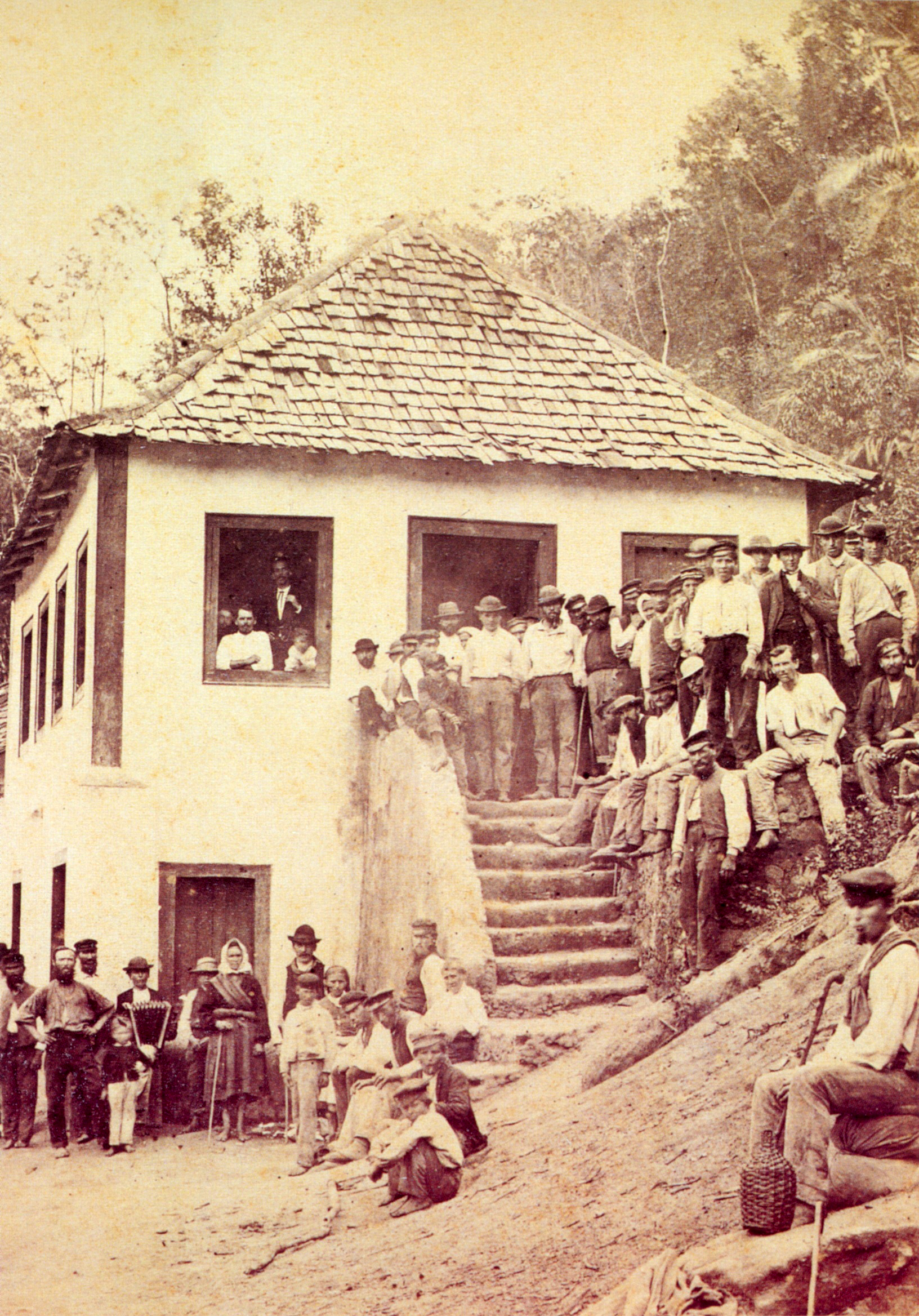|
Rufous-vented Ground Cuckoo
The rufous-vented ground cuckoo (''Neomorphus geoffroyi'') is a Vulnerable species of cuckoo in the tribe Neomorphini of subfamily Crotophaginae. It is found in Bolivia, Brazil, Colombia, Costa Rica, Ecuador, Nicaragua, Panama, and Peru.HBW and BirdLife International (2021) Handbook of the Birds of the World and BirdLife International digital checklist of the birds of the world. Version 6. Available at: http://datazone.birdlife.org/userfiles/file/Species/Taxonomy/HBW-BirdLife_Checklist_v6_Dec21.zip retrieved August 7, 2022 Taxonomy and systematics Most taxonomic systems assign these six subspecies to the rufous-vented ground cuckoo:Remsen, J. V., Jr., J. I. Areta, E. Bonaccorso, S. Claramunt, A. Jaramillo, D. F. Lane, J. F. Pacheco, M. B. Robbins, F. G. Stiles, and K. J. Zimmer. Version 24 July 2022. A classification of the bird species of South America. American Ornithological Society. https://www.museum.lsu.edu/~Remsen/SACCBaseline.htm retrieved July 24, 2022Clements, J. F., ... [...More Info...] [...Related Items...] OR: [Wikipedia] [Google] [Baidu] |
Coenraad Jacob Temminck
Coenraad Jacob Temminck (; 31 March 1778 – 30 January 1858) was a Dutch people, Dutch patrician, Zoology, zoologist and museum director. Biography Coenraad Jacob Temminck was born on 31 March 1778 in Amsterdam in the Dutch Republic. From his father, Jacob Temminck, who was treasurer of the Dutch East India Company with links to numerous travellers and collectors, he inherited a large collection of bird specimens. His father was a good friend of Francois Levaillant who also guided Coenraad. Temminck's ''Manuel d'ornithologie, ou Tableau systématique des oiseaux qui se trouvent en Europe'' (1815) was the standard work on European birds for many years. He was also the author of ''Histoire naturelle générale des Pigeons et des Gallinacées'' (1813–1817), illustrated by Pauline Rifer de Courcelles, Pauline Knip. He wrote ''Nouveau Recueil de Planches coloriées d'Oiseaux'' (1820–1839), and contributed to the mammalian sections of Philipp Franz von Siebold's ''Fauna jap ... [...More Info...] [...Related Items...] OR: [Wikipedia] [Google] [Baidu] |
International Ornithological Committee
The International Ornithologists' Union (IOU) is an international organization for the promotion of ornithology. It links basic and applied research and nurtures education and outreach activities. Specifically, the IOU organizes and funds global congresses on ornithology at regular intervals, sets up and supports commissions and committees on various aspects of avian biology and conservation, and initiates and backs other international ornithological activities with specific aims consistent with its own mission and goal. It discloses the names and professional affiliations of its members on its website to encourage international collaboration and networking. The IOU acts as the Ornithology Section of the International Union of Biological Sciences, IUBS. Vision The IOU has the objective of supporting, promoting, and advancing avian biology by disseminating ornithological knowledge to the scientific community and the public; interacting with other scientific organizations, foundatio ... [...More Info...] [...Related Items...] OR: [Wikipedia] [Google] [Baidu] |
IUCN
The International Union for Conservation of Nature (IUCN) is an international organization working in the field of nature conservation and sustainable use of natural resources. Founded in 1948, IUCN has become the global authority on the status of the natural world and the measures needed to safeguard it. It is involved in data gathering and Data analysis, analysis, research, field projects, advocacy, and education. IUCN's mission is to "influence, encourage and assist societies throughout the world to conserve nature and to ensure that any use of natural resources is equitable and ecologically sustainable". Over the past decades, IUCN has widened its focus beyond conservation ecology and now incorporates issues related to sustainable development in its projects. IUCN does not itself aim to mobilize the public in support of nature conservation. It tries to influence the actions of governments, business and other stakeholders by providing information and advice and through buildin ... [...More Info...] [...Related Items...] OR: [Wikipedia] [Google] [Baidu] |
South
South is one of the cardinal directions or compass points. The direction is the opposite of north and is perpendicular to both west and east. Etymology The word ''south'' comes from Old English ''sūþ'', from earlier Proto-Germanic ''*sunþaz'' ("south"), possibly related to the same Proto-Indo-European root that the word ''sun'' derived from. Some languages describe south in the same way, from the fact that it is the direction of the sun at noon (in the Northern Hemisphere), like Latin meridies 'noon, south' (from medius 'middle' + dies 'day', ), while others describe south as the right-hand side of the rising sun, like Biblical Hebrew תֵּימָן teiman 'south' from יָמִין yamin 'right', Aramaic תַּימנַא taymna from יָמִין yamin 'right' and Syriac ܬܰܝܡܢܳܐ taymna from ܝܰܡܝܺܢܳܐ yamina (hence the name of Yemen, the land to the south/right of the Levant). South is sometimes abbreviated as S. Navigation By convention, the ''bottom or down ... [...More Info...] [...Related Items...] OR: [Wikipedia] [Google] [Baidu] |
Army Ant
The name army ant (or legionary ant or ''marabunta'') is applied to over 200 ant species in different lineages. Because of their aggressive predatory foraging groups, known as "raids", a huge number of ants forage simultaneously over a limited area. Another shared feature is that, unlike most ant species, army ants do not construct permanent nests; an army ant colony moves almost incessantly over the time it exists. All species are members of the true ant family, Formicidae, but several groups have independently evolved the same basic behavioural and ecological syndrome. This syndrome is often referred to as "legionary behaviour", and may be an example of convergent evolution. Most New World army ants belong to the genera ''Cheliomyrmex'', ''Neivamyrmex'', ''Nomamyrmex'', ''Labidus'', and ''Eciton''. The largest genus is ''Neivamyrmex'', which contains more than 120 species; the most predominant species is ''Eciton burchellii''; its common name "army ant" is considered to be t ... [...More Info...] [...Related Items...] OR: [Wikipedia] [Google] [Baidu] |
Arthropod
Arthropods ( ) are invertebrates in the phylum Arthropoda. They possess an arthropod exoskeleton, exoskeleton with a cuticle made of chitin, often Mineralization (biology), mineralised with calcium carbonate, a body with differentiated (Metamerism (biology), metameric) Segmentation (biology), segments, and paired jointed appendages. In order to keep growing, they must go through stages of moulting, a process by which they shed their exoskeleton to reveal a new one. They form an extremely diverse group of up to ten million species. Haemolymph is the analogue of blood for most arthropods. An arthropod has an open circulatory system, with a body cavity called a haemocoel through which haemolymph circulates to the interior Organ (anatomy), organs. Like their exteriors, the internal organs of arthropods are generally built of repeated segments. They have ladder-like nervous systems, with paired Anatomical terms of location#Dorsal and ventral, ventral Ventral nerve cord, nerve cord ... [...More Info...] [...Related Items...] OR: [Wikipedia] [Google] [Baidu] |
Rio De Janeiro (state)
Rio de Janeiro () is one of the States of Brazil, 27 federative units of Brazil. It has the second largest economy of Brazil, with the largest being that of the state of São Paulo (state), São Paulo. The state, which has 8.2% of the Brazilian population, is responsible for 9.2% of the Brazilian Gross domestic product, GDP. The state of Rio de Janeiro is located within the Brazilian geopolitical region classified as the Southeast Region, Brazil, Southeast (assigned by Brazilian Institute of Geography and Statistics, IBGE). Rio de Janeiro shares borders with all the other states in the same Southeast macroregion: Minas Gerais (North, N and Ordinal directions, NW), Espírito Santo (Ordinal direction, NE) and São Paulo (state), São Paulo (Ordinal directions, SW). It is bounded on the east and south by the South Atlantic Ocean. Rio de Janeiro has an area of . Its capital is the city of Rio de Janeiro, Rio de Janeiro, Rio de Janeiro, which was the capital of the Portuguese Colonial ... [...More Info...] [...Related Items...] OR: [Wikipedia] [Google] [Baidu] |
Espírito Santo
Espírito Santo (; ) is a state in southeastern Brazil. Its capital is Vitória, and its largest city is Serra. With an extensive coastline, the state hosts some of the country's main ports, and its beaches are significant tourist attractions. The state is divided into 78 municipalities. The capital, Vitória, is located on an island, which borders the municipalities of Vila Velha, Cariacica, and Serra. These municipalities, plus the outer cities of Fundão and Guarapari, constitute the state's main metro area. In the northern extremes of Espírito Santo is Itaúnas, in the municipality of Conceição da Barra, which is a tourist location known for its sand dunes and forró tradition. The Captaincy of Espírito Santo was carved out of the Captaincy of Bahia in the 18th century, during the colonial rule of Brazil, and named after a 16th-century captaincy covering roughly the same area of coast. Following the elevation of Brazil to a constituent kingdom of the Un ... [...More Info...] [...Related Items...] OR: [Wikipedia] [Google] [Baidu] |
Bahia
Bahia () is one of the 26 Federative units of Brazil, states of Brazil, located in the Northeast Region, Brazil, Northeast Region of the country. It is the fourth-largest Brazilian state by population (after São Paulo (state), São Paulo, Minas Gerais, and Rio de Janeiro (state), Rio de Janeiro) and the 5th-largest by area. Bahia's capital is the city of Salvador, Bahia, Salvador (formerly known as "Cidade do São Salvador da Bahia de Todos os Santos", literally "City of the Holy Savior of the Bay of All the Saints"), on a Spit (landform), spit of land separating the Bay of All Saints from the Atlantic. Once a stronghold of supporters of direct rule of Brazil by the Portuguese monarchy, and dominated by Agriculture in Brazil, agricultural, Slavery in Brazil, slaving, and ranching interests, Bahia is now a predominantly Working class, working-class industrial and agricultural state. The state is home to 7% of the Brazilian population and produces 4.2% of the country's GDP. It is ... [...More Info...] [...Related Items...] OR: [Wikipedia] [Google] [Baidu] |
Maranhão
Maranhão () is a States of Brazil, state in Brazil. Located in the country's Northeast Region, Brazil, Northeast Region, it has a population of about 7 million and an area of and it is divided into 217 municipalities. Clockwise from north, it borders on the Atlantic Ocean for 2,243 km and the states of Piauí, Tocantins and Pará. The people of Maranhão have a distinctive accent within the common Northeastern Brazilian dialect. Maranhão is described in literary works such as ''Canção do exílio, Exile Song'' by Gonçalves Dias and ''Casa de Pensão'' by Aluísio Azevedo. The dunes of Lençóis Maranhenses National Park, Lençóis are an important area of environmental preservation. Also of interest is the state capital of São Luís, Maranhão, São Luís, which is a UNESCO World Heritage Site. Another important conservation area is the Parnaíba River delta, between the states of Maranhão and Piauí, with its lagoons, desert dunes and deserted beaches or islands, suc ... [...More Info...] [...Related Items...] OR: [Wikipedia] [Google] [Baidu] |
Madeira River
The Madeira River ( ) is a major waterway in South America. It is estimated to be in length, while the Madeira-Mamoré is estimated near or in length depending on the measuring party and their methods. The Madeira is the biggest tributary of the Amazon, accounting for about 15% of the water in the basin. A map from Emanuel Bowen in 1747, held by the David Rumsey Map Collection, refers to the Madeira by the pre-colonial, indigenous name Cuyari. The River of Cuyari, called by the Portuguese Madeira or the Wood River, is formed by two great rivers, which join near its mouth. It was by this River, that the Nation of Topinambes passed into the River Amazon. Climate The mean inter-annual precipitations on the great basins vary from , the entire upper Madeira basin receiving . The greatest extremes of rainfall are between . Even just below the confluence that forms it, the Madeira is one of the largest rivers by discharge of the world, with a mean inter-annual discharge of , i.e ... [...More Info...] [...Related Items...] OR: [Wikipedia] [Google] [Baidu] |





